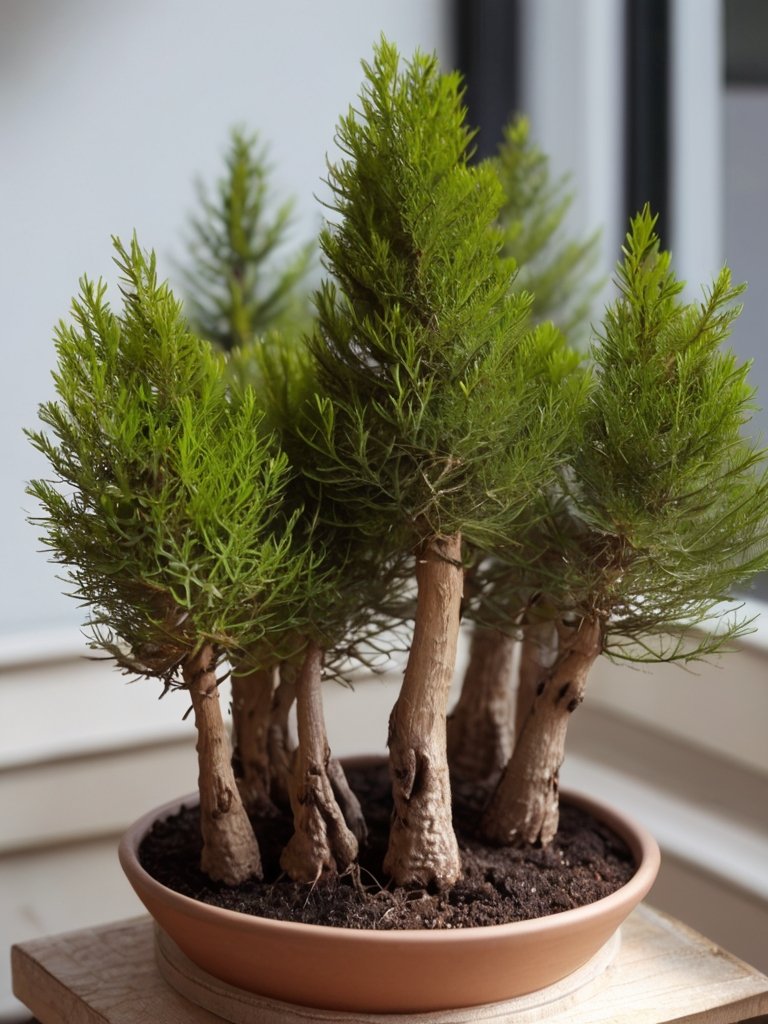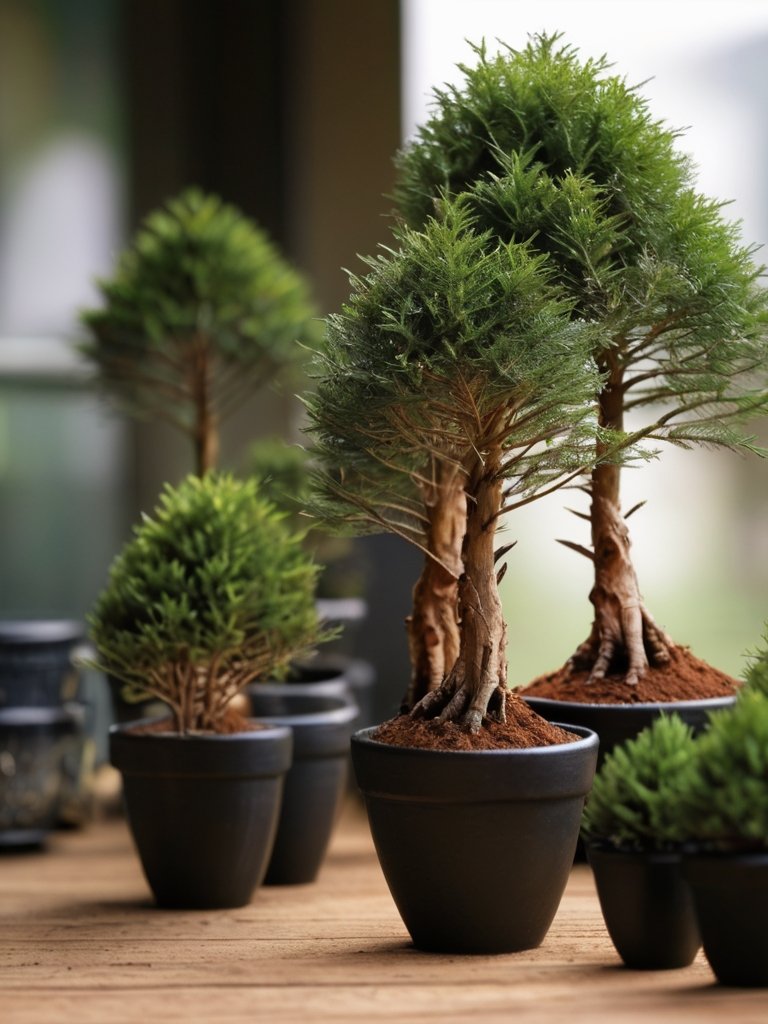
Hello gardening folks! Cypress trees can be a fantastic addition to your garden, adding a touch of beauty that lasts through time.
Not only are these trees aesthetically pleasing, but they’re also rewarding to nurture.
Let’s dive into the details of caring for these majestic trees and creating a tranquil garden with cypress trees as the centerpiece.
Ideal Conditions for Cypress Trees to Growth
Sunlight
Cypress trees thrive in sunlight, basking in around six hours of sun daily.
They can handle partial shade but prefer ample sunlight for robust growth and lush foliage.
Soil type
They’re flexible with soil types, tolerating various compositions like loamy, sandy, or clay-based soils.
The key is well-drained soil to prevent waterlogging and root issues.
- Read also: Potting Mix vs. Garden Soil
- Read also: How to Lower pH in Soil for a Thriving Garden
Watering
Cypress trees aren’t too fussy, but they do like regular watering, especially when it’s dry. Keep the soil moist but don’t flood it.
Climate
These trees can handle all sorts of weather. They do great in mild areas but can handle both dry and humid conditions.
They can tough it out during short dry spells, but if it stays dry for a while, they might struggle.
Ample space
Make sure these trees have plenty of space!
They grow really tall and wide, so pick a spot where they’ll have lots of room when they’re fully grown.
Keep their width in mind too, so they don’t block paths, get tangled in power lines, or crowd nearby buildings.
Limited wind
In windy areas, young cypress trees, especially ones with shallow roots, can get damaged.
Protect them by planting in spots shielded from the wind or setting up barriers to keep them safe from strong gusts.

Types of Cypress Trees
Italian cypress
- The iconic Tuscan cypress boasts its tall, slender shape and deep green leaves, making it a classic choice.
- It can grow as tall as 80 feet, adding a stunning architectural touch to gardens and more formal landscapes.
- This type flourishes in sunny, warm climates and prefers soil that drains well.
Leyland cypress
- A quick-growing mix with thick, green leaves, perfect for privacy and shielding from the wind.
- It can grow as tall as 60 feet and requires frequent trimming to stay in shape.
- This type adjusts well to different soils and climates, making it a favored option for creating hedges and screens.
Bald cypress
- This particular cypress sheds its leaves in the fall, showcasing a spectacular shift from green to a vibrant golden yellow, and finally to a rich reddish-brown hue.
- It thrives in damp soils found near lakes and rivers, developing unique structures called “knees” that emerge above the waterline.
- Growing as tall as 100 feet, it stands out in expansive landscapes and gardens with moist conditions.
Arizona Cypress
- A resilient choice for colder areas, this variety displays a graceful, cascading growth with blue-green leaves.
- Usually reaching a height of 20-40 feet, it’s perfect for bringing texture and depth to compact gardens.
- This type can withstand drought and less favorable soil conditions, making it an easy-care option.
Monterey cypress
- This particular tree is known for its unique, contorted branches and elegant form shaped by the coastal winds, adding a charming seaside vibe to any garden.
- It’s quite resilient and capable of enduring strong winds and the salt-laden air typical of coastal regions, making it an ideal choice for such areas.
- With a rapid growth rate, reaching heights of approximately 70 feet, it’s a great option for creating privacy and providing protection against the fierce coastal winds.
Hinoki cypress
- Favored by bonsai lovers and often seen in Japanese gardens, this cypress grows slowly, maintaining a small, tidy shape with its gentle, green leaves.
- There’s a wide range of sizes and shapes this tree can take on, varying from compact versions to those with gracefully drooping branches.
- It prefers cooler weather and soil that’s damp but drains well.
Lemon cypress
- This special type stands out with its lively lemon-yellow leaves, bringing a bright burst of sunshine to landscapes.
- Typically reaching between 20 to 30 feet in height, this tree grows steadily.
- It flourishes in environments with ample sunlight and well-draining soil.
Planting Cypress Trees

Absolutely, when it comes to planting cypress trees, a few steps can ensure a successful start for these beauties in your garden:
Prepare the hole
Dig a hole that’s about twice as wide as the root ball but avoid going too deep.
A shallow depth ensures the roots don’t suffocate or get buried too deeply.
Handle the roots carefully
Once you have the hole ready, gently handle the tree and its roots.
Tease out the roots from the root ball, especially if they appear tangled or circling the ball. This encourages outward growth and prevents girdling.
Planting process
Position the cypress tree at the center of the dug hole, ensuring that the top of the root ball sits slightly higher than the surrounding ground level.
Refill the hole with the previously removed soil, gently pressing it down to eliminate any air pockets.
Watering
Once the tree is planted, generously water it.
This helps the soil settle around the roots, supplying vital moisture while the tree adapts to its new surroundings. Make sure the soil remains consistently moist but not waterlogged.
Mulching
Think about spreading a layer of mulch around the tree’s base.
Mulch serves several purposes: it keeps moisture in, stabilizes the soil temperature, and stops weed growth.
Remember to leave a bit of space between the trunk and the mulch to prevent moisture buildup against the bark.
Regular care
Monitor your recently planted cypress tree closely.
Consistent watering, particularly during dry periods, is vital for the initial year or two while the tree develops its root system.
Be cautious not to overwater, as excessive moisture can cause root rot.
Pruning Cypress Trees
Maintaining the beauty and health of cypress trees requires proper pruning. Here are some helpful tips for effectively pruning cypress trees:
Timing matters
- Best time: Late winter or early spring, before new growth emerges. This reduces stress on the tree and allows wounds to heal well.
- Additional trimming: Light pruning in late spring or early summer can refine the shape or manage growth.
- Avoid: Pruning in late summer or fall, as it promotes vulnerable new growth susceptible to winter damage.
Tools and techniques
- Use proper tools: Sharp loppers, pruning shears, and a hand saw for larger branches. Clean and disinfect tools to prevent disease spread.
- Cut with care: Make slanted cuts, angling away from the branch collar to aid drainage and quicker healing.
- Start from below: Begin by removing dead, diseased, or damaged branches, working upward.
- Preserve natural form: Avoid cutting the leader (central shoot) unless necessary. Trim side branches to maintain the desired shape.
Tips for effective pruning
- Gentle approach: Light pruning is key. Trim only 1/3 to 1/2 of a branch’s length, focusing on outward-facing shoots for better air circulation and light access.
- Mind the wood: Avoid cutting into brown wood, as cypress trees don’t readily sprout new growth from bare branches. Stick to areas with green foliage for pruning.
Cypress Tree Pests and Diseases

Cypress trees are not immune to pests and diseases that can threaten their health and beauty. Some of the common pests and diseases affecting cypress trees include:
Pests
| Pest | Effect on Plants |
| Aphids | These tiny, sap-sucking insects can cause foliage to yellow, curl, and even drop. They often cluster on branch tips and new growth. |
| Scales | These armored insects appear as small, brown bumps on branches and needles. They can weaken the tree and stunt growth. |
| Bagworms | These caterpillars live in silken bags attached to branches and feed on foliage. Heavy infestations can defoliate the tree. |
| Spider mites | These tiny pests feed on the sap of needles, causing them to turn yellow or bronze. They often leave behind webbing on branches. |
Diseases
| Diseases | Effect on Plants |
| Canker diseases | These fungal diseases cause sunken lesions on branches and trunks, which can girdle and kill the branch. Common canker diseases affecting cypress trees include cypress canker, Cytospora canker, and Phomopsis canker. |
| Needle blights | These fungal diseases cause needles to turn brown or yellow and drop. Common needle blights affecting cypress trees include Passalora needle blight and Seiridium canker. |
| Root rots | These fungal diseases attack the roots of the tree, causing wilting, stunted growth, and eventually death. Common root rots affecting cypress trees include Phytophthora root rot and Port-Orford cedar root disease. |
Common Problems with Cypress Trees
Browning foliage
Browning foliage might signal various issues such as drought stress, fungal infections, or inadequate watering.
Ensure the tree receives adequate water during dry periods without overwatering, and inspect for signs of fungal infections or pests.
Prune affected areas and maintain proper tree health practices.
Root rot
Excessive moisture or poorly draining soil can lead to root rot, causing the roots to decay.
To prevent this, ensure proper drainage around the tree.
Avoid overwatering and improve soil drainage if needed. Remove affected parts and consider replanting in a well-draining location if root rot persists.
“Blues” or discoloration
Some cypress trees might show signs of bluish discoloration, often indicating stress due to environmental factors like poor soil conditions, nutrient deficiencies, or extreme temperatures.
Conduct soil tests, provide appropriate nutrients, and ensure the tree is in suitable growing conditions to alleviate this issue.
Pest infestations
Pests like spider mites, bagworms, or scale insects can target cypress trees, causing damage to foliage or branches.
Regularly inspect the tree for signs of infestation and treat promptly with appropriate insecticides or by removing affected areas.
Environmental stress
Cypress trees might struggle due to environmental factors like extreme temperatures, excessive sun exposure, or unsuitable soil conditions.
Providing adequate shade during hot spells and ensuring the soil is well-suited to the tree’s needs can help mitigate these problems.
- Read also: A Guide To The Types of Soil for Gardening
- Read also: How to Make Organic Fertilizers at Home
Conclusion
Nurturing cypress trees is truly fulfilling.
Their elegance, strength, and easy upkeep make them a beloved part of any garden. With some attention and affection, your cypress trees will thrive, impressing everyone who sees them.
Frequently Ask Questions
Cypress trees typically grow at a moderate pace, varying between species. On average, expect them to grow a few feet per year.
While young cypress trees can thrive in containers, they’ll eventually outgrow them. It’s best to plant them in the ground for long-term growth.
They appreciate consistent watering, especially during dry spells, but avoid water logging the soil.



